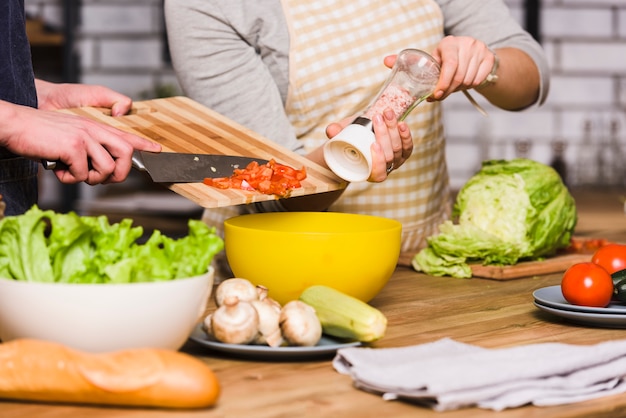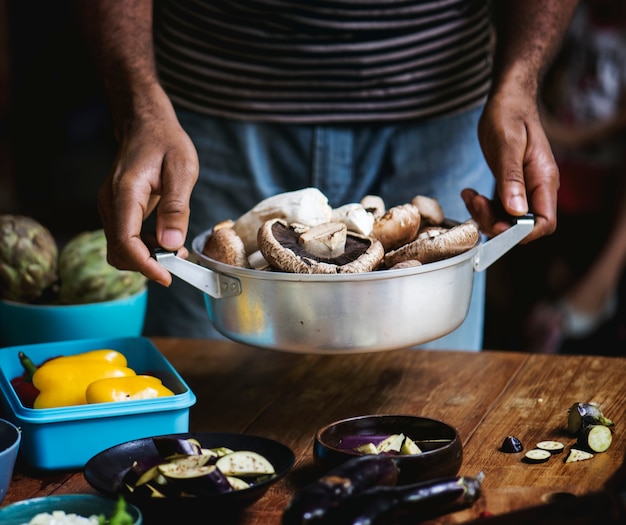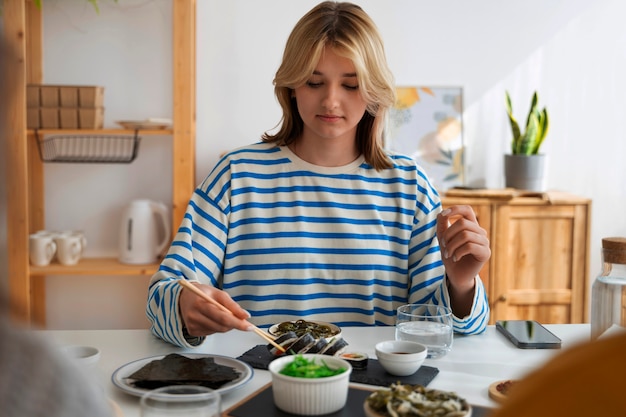Let's talk chitlins. I know some folks might wrinkle their noses at the very mention of 'em, but trust me, once you get past the initial "what on earth?" reaction, you'll discover a whole new world of flavour. It's not for everyone, I'll give you that, but for those who appreciate a bit of down-home cooking, a good plate of chitlins is pure comfort food, a taste of tradition, and a reminder of simpler times.
I remember growing up, my Nan used to make the most incredible chitlins, and let me tell you, it wasn't just about the taste, it was about the whole experience. The aroma that filled the house, the warmth of the kitchen, and the stories that were shared around the table - those are the memories that make chitlins so special.
Now, I'm not going to lie, it's not the easiest dish to make. It takes time, patience, and a bit of know-how. But I promise you, the effort is worth it. So, grab your apron, get your ingredients ready, and let's dive into the world of chitlins together.
(Part 1) The Chitlins: Getting Started

Choosing Your Chitlins: The First Crucial Step
The first step in making a good plate of chitlins is selecting the right ingredients. You want to find good quality chitlins, and let's be honest, there are a few things to watch out for. You can find chitlins at your local butcher shop, but if you're not sure what to look for, I'd recommend getting them pre-cleaned and pre-packaged.
Here's what you need to know when choosing your chitlins:
- Freshness: Always choose chitlins that look and smell fresh. They should be a light pink or white colour and have no strong odour. If you notice any discoloration or an unpleasant smell, it's best to avoid those chitlins.
- Packaging: Make sure the chitlins are properly sealed and stored in a refrigerated environment. Look for a reputable brand and ensure the packaging is not damaged. You want to ensure they've been handled with care and haven't been exposed to anything that could compromise their quality.
- Pre-cleaned: If you're not experienced with cleaning chitlins, it's best to go with pre-cleaned options. This will save you a lot of time and hassle. Cleaning chitlins is a process that requires a bit of skill and can be quite time-consuming, so if you're not up for the challenge, pre-cleaned is definitely the way to go.
Cleaning Chitlins: A Dive into the Traditional Method
Now, if you're feeling adventurous and want to tackle the cleaning process yourself, here's a quick rundown:
First, give the chitlins a good rinse under cold running water. You'll want to remove any excess fat or debris. Once they're rinsed, you'll need to soak them in a large pot of cold water for at least 24 hours, changing the water every 4-6 hours. This process helps to remove any remaining impurities and ensures they're thoroughly cleaned. The soaking helps break down any lingering odors and softens the chitlins for easier cooking.
After soaking, you'll need to boil the chitlins for about 30 minutes. This helps to further remove any impurities and tenderises the meat. After the boil, drain them thoroughly, and you're good to go.
But honestly, if you're not confident about the cleaning process, it's totally fine to get them pre-cleaned. There's no shame in taking the easier route. It’s a big job! It's more about enjoying the final dish, and if pre-cleaned chitlins make that easier, then that's what you should do.
(Part 2) The Recipe: Bringing the Flavour

The Essential Ingredients: The Building Blocks of Deliciousness
Now, for the chitlins recipe itself, you'll need a few key ingredients to get that perfect down-home taste. Here's what you'll need:
- 1 pound of pre-cleaned chitlins - The star of the show!
- 1 large onion, chopped - Adds a touch of sweetness and depth.
- 4 cloves garlic, minced - Essential for that wonderful savory flavour.
- 1 teaspoon black pepper - A classic spice that adds a bit of heat and depth.
- 1 tablespoon paprika - A warm and smoky flavour that adds a touch of spice.
- 1 tablespoon cayenne pepper (optional, for added heat) - If you like things spicy, add a tablespoon of cayenne pepper.
- 1/2 cup chicken broth - Adds moisture and flavour to the dish.
- 1/4 cup vinegar (apple cider or white vinegar) - Helps to tenderize the chitlins and adds a tangy flavour.
- 1 bay leaf - Adds a subtle herbal flavour and aroma.
- 1/2 teaspoon salt (adjust to taste) - Salt enhances the flavours of the dish.
- 1/4 cup chopped fresh parsley (optional, for garnish) - Adds a fresh, vibrant touch.
The Cooking Process: Unleashing the Flavour
Now, onto the cooking. This is where the magic really happens. This recipe uses a slow cooker, which is a great way to ensure that the chitlins cook evenly and become tender. You can also cook them on the stovetop if you prefer, but be careful not to overcook them, as they can become tough.
Here's how you do it:
- Prep the ingredients: Chop the onion and garlic. Measure out the spices. This ensures everything is ready to go when you start cooking.
- Add to the slow cooker: Place the chitlins, onion, garlic, spices, chicken broth, vinegar, bay leaf, and salt in your slow cooker.
- Cook on low: Cover the slow cooker and cook on low for 6-8 hours, or until the chitlins are tender. Stir occasionally to ensure even cooking. The slow cooker does most of the work, allowing the flavours to meld together and the chitlins to become tender and delicious.
- Check for doneness: After about 6 hours, check the chitlins. They should be tender and easily pierceable with a fork. If they're not quite done, continue cooking for another hour or two, checking frequently.
- Serve and enjoy: Once the chitlins are cooked, remove them from the slow cooker, discard the bay leaf, and serve hot. Garnish with chopped fresh parsley if desired.
Variations: Playing with Flavours and Creativity
Now, this is just a basic recipe. Feel free to get creative and experiment with different flavours. For example, you could add a tablespoon of smoked paprika for a smoky flavour, or a pinch of red pepper flakes for a little extra heat. Some folks like to add a bit of hot sauce or mustard for a tangy kick. You can even try using different types of broth, such as beef broth or vegetable broth, to create your own unique flavour profile.
The great thing about chitlins is that they're so versatile. They can be used in a variety of dishes, from simple one-pot meals to more complex stews. Get creative and see what you can come up with.
(Part 3) Accompanying Sides: A Feast Fit for a King

The Importance of Sides: Balancing the Flavors
Now, let's talk about the sides. A good plate of chitlins needs a good selection of sides to really make it a meal. It's about balance, you see. The richness of the chitlins needs to be balanced with the crispness of a salad, the sweetness of a cornbread, and the tangy kick of some coleslaw.
Classic side dishes: A Time-Honored Tradition
Here are a few classic side dishes that go beautifully with chitlins:
- Cornbread: A staple of Southern cuisine, cornbread is a perfect complement to chitlins. The sweetness of the cornbread balances the richness of the chitlins, and the texture creates a delightful contrast.
- collard greens: A hearty and flavourful side dish, collard greens add a touch of green to the plate and provide a satisfyingly earthy flavour.
- Macaroni and Cheese: A creamy and cheesy delight, macaroni and cheese adds a touch of indulgence to the meal. The combination of cheesy goodness and the smoky flavour of the chitlins is a match made in heaven.
- potato salad: A classic picnic favourite, potato salad is a refreshing and tangy side that complements the richness of the chitlins perfectly.
- green bean casserole: A creamy and comforting side dish, green bean casserole provides a touch of elegance to the meal. The creamy sauce and crispy onions add a delightful contrast to the texture of the chitlins.
Beyond the Classics: Expanding Your Culinary Horizons
Don't be afraid to think outside the box when it comes to sides. You can get really creative here. For example, you could try a fresh salad with a tangy vinaigrette dressing, or a simple side of roasted vegetables. If you're feeling adventurous, try a side of spicy fried okra, or a sweet and tangy pineapple salsa.
The possibilities are endless. It's all about finding what you like and what works best for you. Remember, the goal is to create a balanced and flavourful meal that you'll enjoy.
(Part 4) Serving Your Chitlins: A Feast for the Senses
The Art of Presentation: Elevating Your Culinary Experience
Now, let's talk about presentation. A good plate of chitlins is not just about the taste, it's about the whole experience. The way you present your food can have a big impact on how people perceive it. It's about creating a visual feast that tantalises the senses and makes your guests feel special.
Plate it Up: A Simple Yet Effective Approach
When it comes to serving chitlins, a simple approach is best. Use a large platter or serving bowl to create a generous portion. You can arrange the chitlins in a circular pattern or simply pile them high. The key is to make them look inviting and appetizing.
Now, don't forget about your sides. Arrange them around the chitlins, either on individual plates or on the same platter. You can use bowls or ramekins to hold smaller portions of sides, or simply arrange them around the chitlins in a visually appealing way.
The Finishing Touches: Adding That Extra Touch of Elegance
Now, to really elevate your presentation, add a few finishing touches. You can sprinkle a little chopped parsley over the chitlins, or add a drizzle of hot sauce or vinegar for a touch of colour and flavour. You can even get creative with garnishes, such as a few sprigs of rosemary or a sprinkle of toasted sesame seeds.
Don't be afraid to experiment with different garnishes and presentation styles. The goal is to create a visually appealing and mouth-watering dish that will impress your guests.
(Part 5) Enjoying Your Chitlins: A Feast for the Soul
The Ultimate Chitlin's Experience: Beyond the Taste
Alright, the chitlins are ready, the sides are assembled, and the table is set. It's time to enjoy your culinary masterpiece. And let me tell you, there's nothing quite like a good plate of chitlins to bring people together. It's a meal that fosters conversation, laughter, and warm memories.
So, gather your loved ones, dig in, and savor every bite. As you're enjoying your chitlins, take a moment to appreciate the rich history and tradition that comes with this dish. It's a taste of the past, a reminder of our roots, and a testament to the power of good food to connect us all.
A Moment to Remember: More Than Just a Meal
When you're done, take a moment to reflect on the experience. The taste, the aroma, the company - these are the things that make chitlins so special. They're more than just a dish, they're a symbol of family, community, and shared memories.
So, the next time you're looking for a unique and delicious meal, give chitlins a try. You might just be surprised at how much you love them.
(Part 6) Chitlins Beyond the Plate: A culinary adventure
Expanding Your Horizons: Unleashing the Versatility of Chitlins
Now, I know you might be thinking, 'chitlins? That's it?' But, hold on! There's a whole world of chitlin's cuisine out there, waiting to be explored.
Creative Uses: A World of Culinary Possibilities
Here are a few ideas to get your culinary juices flowing:
- Chitlin's Stew: Get your slow cooker going and make a hearty stew filled with chitlins, vegetables, and a rich broth. This is a great way to use up leftover chitlins or create a comforting meal on a chilly day.
- Chitlin's Pizza: That's right! Add chitlins to your pizza for a unique and flavorful twist. Top it with your favorite pizza toppings and enjoy! This is a fun and unexpected way to add a bit of Southern flair to your pizza night.
- Chitlin's Tacos: Who says tacos have to be boring? Fill your tortillas with chitlins, cheese, salsa, and your favorite taco fixings. This is a perfect way to add some protein and flavor to your tacos.
- Chitlin's Fritters: Make crunchy and flavorful fritters with chopped chitlins, spices, and flour. Serve them with a dipping sauce of your choice.
- Chitlin's Quesadillas: Spice up your quesadillas with chopped chitlins, cheese, and your favorite fillings.
These are just a few ideas to get you started. Don't be afraid to experiment and let your creativity run wild.
(Part 7) The Chitlin's Tradition: A Journey Through Time
History and Heritage: A Dish Steeped in History
Now, let's talk a little bit about the history of chitlins. They've been a staple food in African American communities for centuries, a dish that represents resilience, resourcefulness, and a deep connection to the land.
Chitlins were often made from the intestines of pigs, a part of the animal that was often overlooked by others. African Americans were resourceful and knew how to make the most of every part of the animal, turning discarded ingredients into delicious and nourishing meals.
A Symbol of Resilience: A culinary legacy
Chitlins became a symbol of resilience and survival, a reminder that even in the face of adversity, there was always a way to find sustenance and create a sense of community. The dish became a source of comfort and pride, representing a deep connection to African American heritage.
Today, chitlins continue to hold a special place in African American culture. They're a dish that evokes memories of family gatherings, shared meals, and the stories that bind us together.
(Part 8) Chitlin's FAQs: Addressing Common Concerns
Questions and Answers: Unraveling the Mystery of Chitlins
Now, I know you might have some questions about chitlins. Here are a few frequently asked questions and their answers:
| Question | Answer |
|---|---|
| Are chitlins healthy? | Like most foods, chitlins can be part of a healthy diet when eaten in moderation. They are a good source of protein and iron, but they are also high in fat and cholesterol. It's best to enjoy them as an occasional treat rather than a staple food. |
| What does chitlins taste like? | Chitlins have a unique and savory flavor. They are often described as tasting like a cross between pork and chicken. The taste can vary depending on how they are prepared, but they often have a slightly smoky or earthy flavor. |
| How can I tell if chitlins are cooked through? | Chitlins should be tender and easily pierceable with a fork. If they are still tough, they need to cook longer. You can also check for doneness by looking for a slightly translucent appearance. |
| What can I do with leftover chitlins? | Leftover chitlins can be refrigerated for up to 3 days. You can use them in sandwiches, salads, or other dishes. You can also add them to soups, stews, or even pasta dishes. |
| Are chitlins safe to eat? | Yes, chitlins are safe to eat when they are properly cleaned and cooked. It's important to ensure they are thoroughly cleaned and cooked to an internal temperature of 160°F (71°C) to kill any harmful bacteria. |
So, there you have it, a comprehensive guide to all things chitlins. Now go forth and cook up a storm! And remember, the key to a great plate of chitlins is to embrace the tradition, enjoy the experience, and have fun with it.
Everyone is watching

Prime Rib Roast Cooking Time Chart: Per Pound Guide
Cooking TipsPrime rib roast. Just the name conjures images of lavish dinners, crackling fires, and hearty laughter. It’s ...

How Long to Bake Potatoes in the Oven (Perfect Every Time)
Cooking TipsBaked potatoes are a staple in my kitchen. They're incredibly versatile, delicious, and surprisingly easy to m...

Perfect Rice Every Time: The Ultimate Guide to Cooking Rice
Cooking TipsAs a self-proclaimed foodie, I've always been a bit obsessed with rice. It's the foundation of countless cuisi...

The Ultimate Guide to Cooking Asparagus: Tips, Techniques, and Recipes
Cooking TipsAsparagus. The mere mention of this spring delicacy conjures up images of vibrant green spears, crisp and burs...

Ultimate Guide to Cooking the Perfect Thanksgiving Turkey
Cooking TipsThanksgiving. Just the word conjures up images of overflowing tables laden with delicious food, the scent of r...
